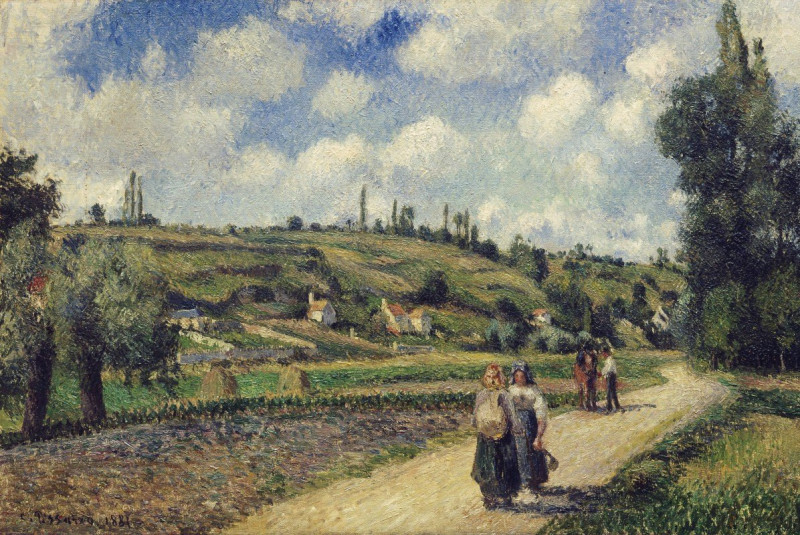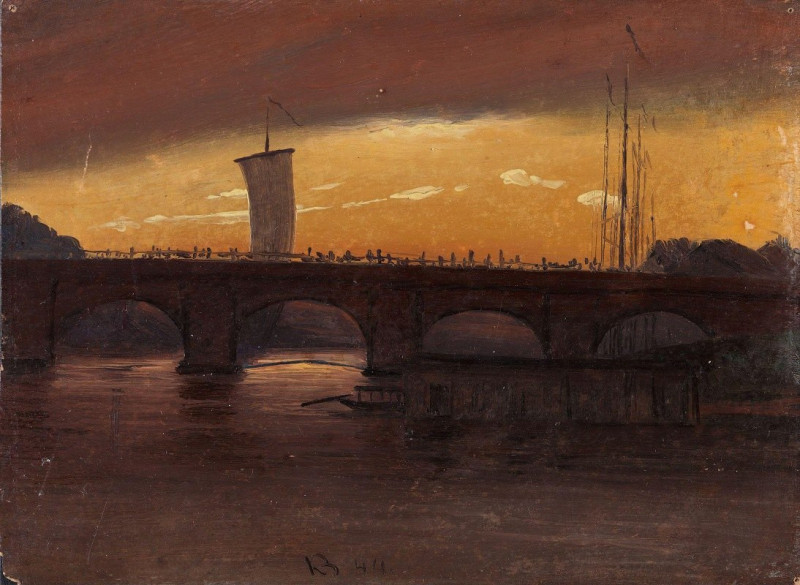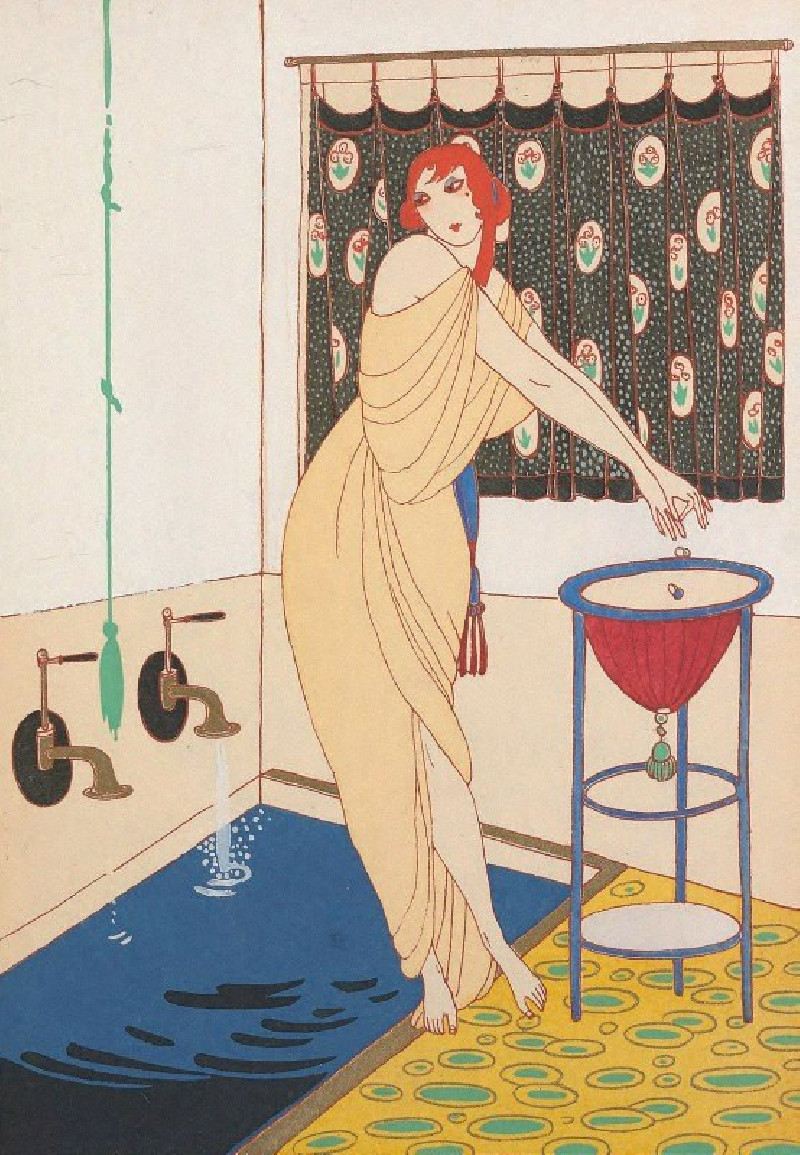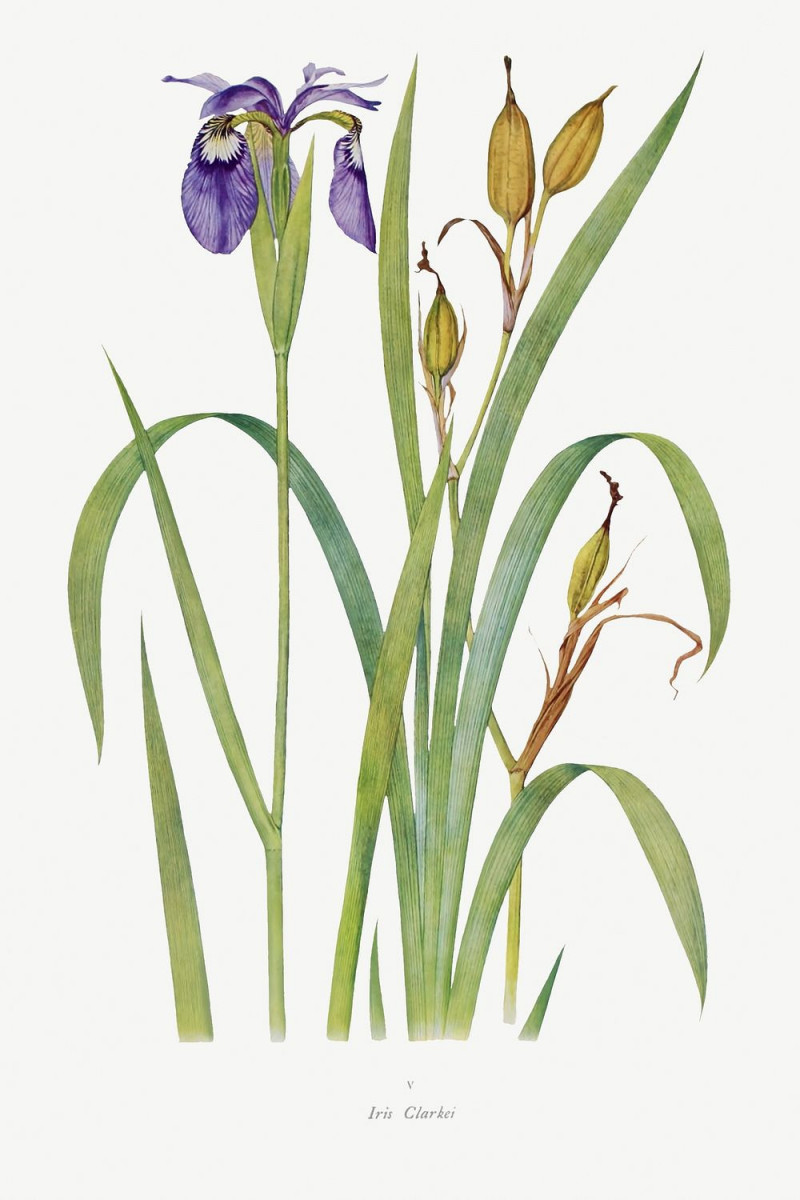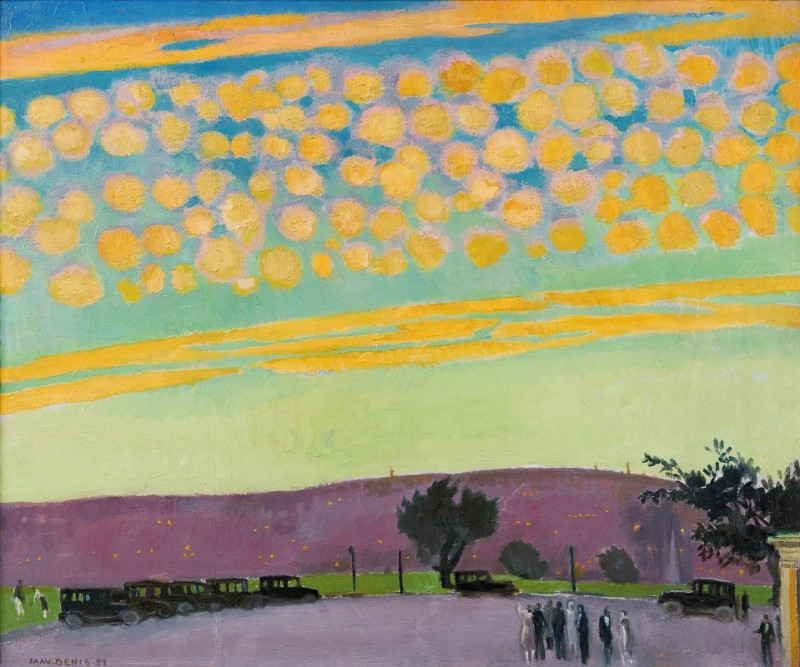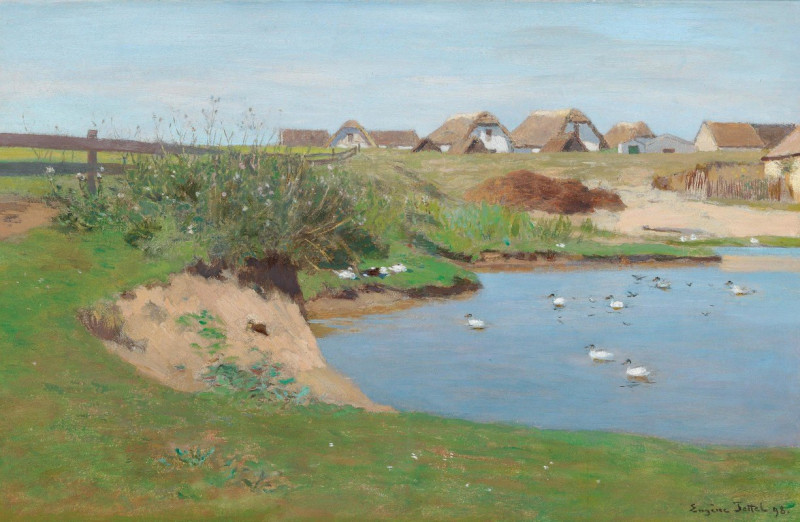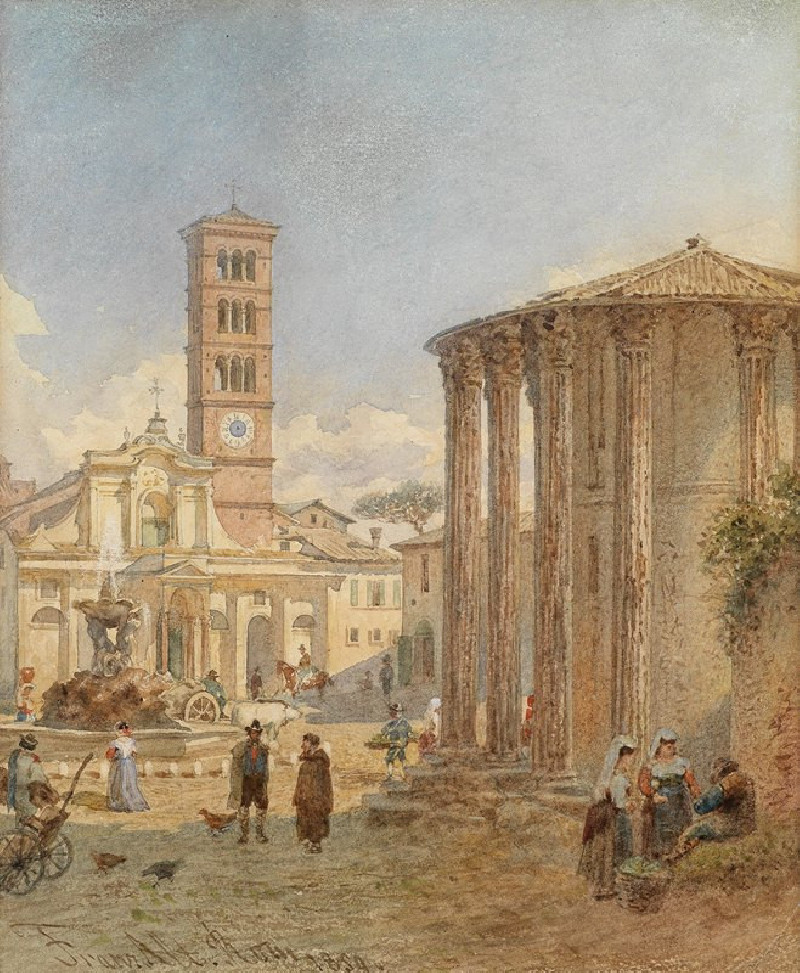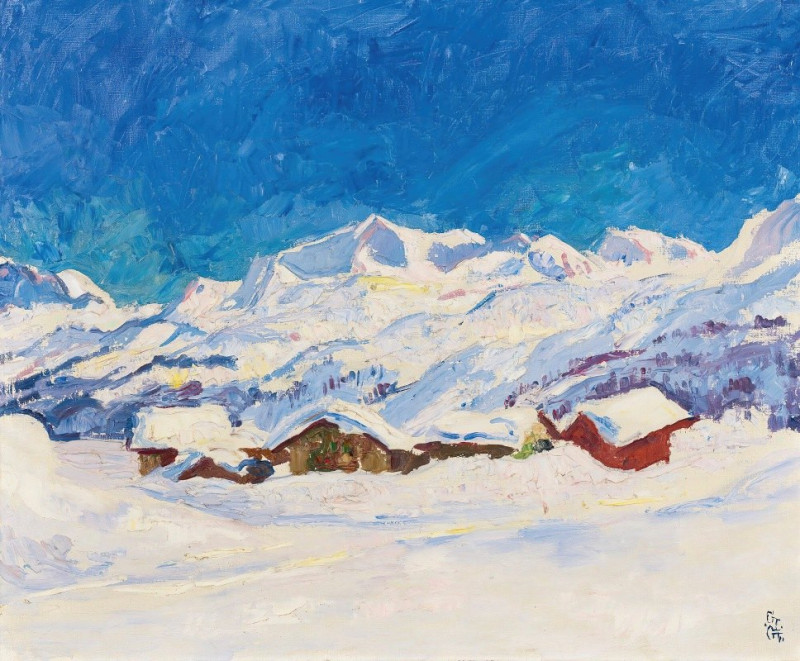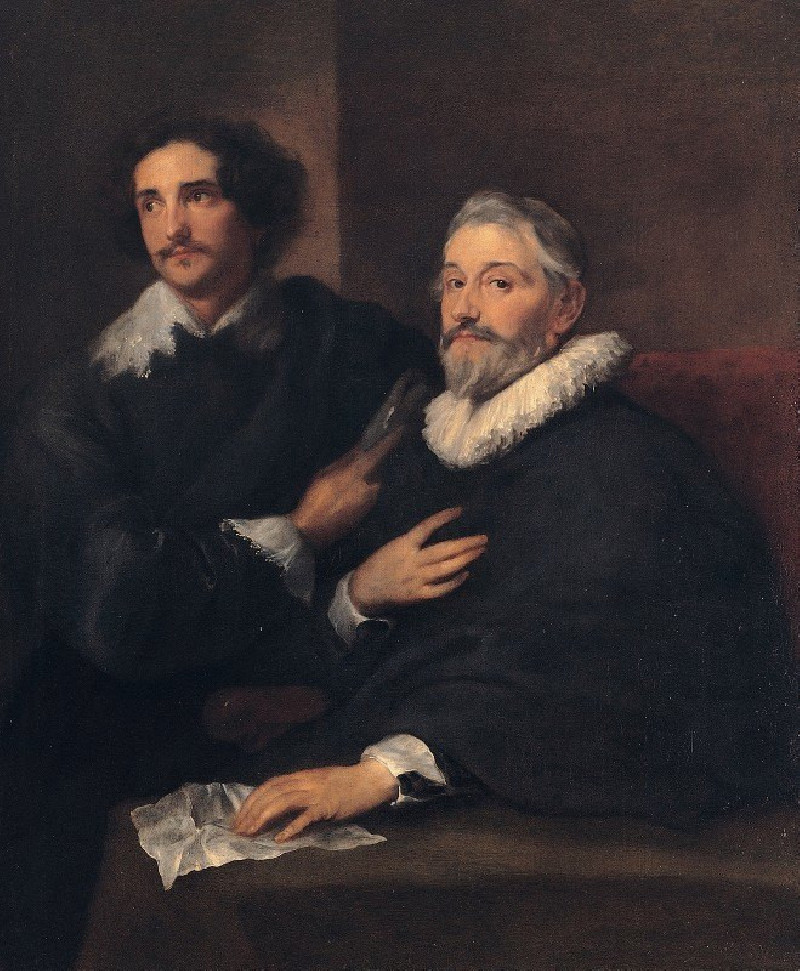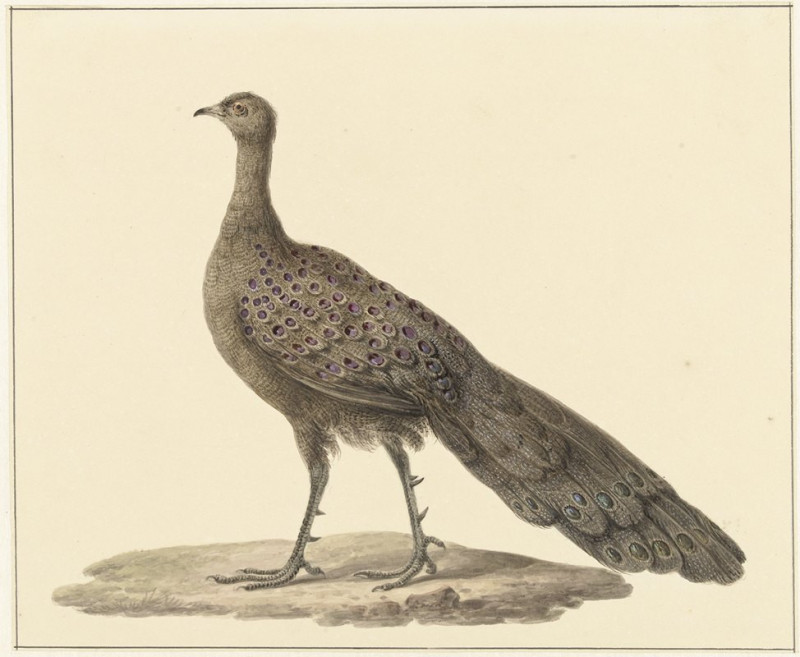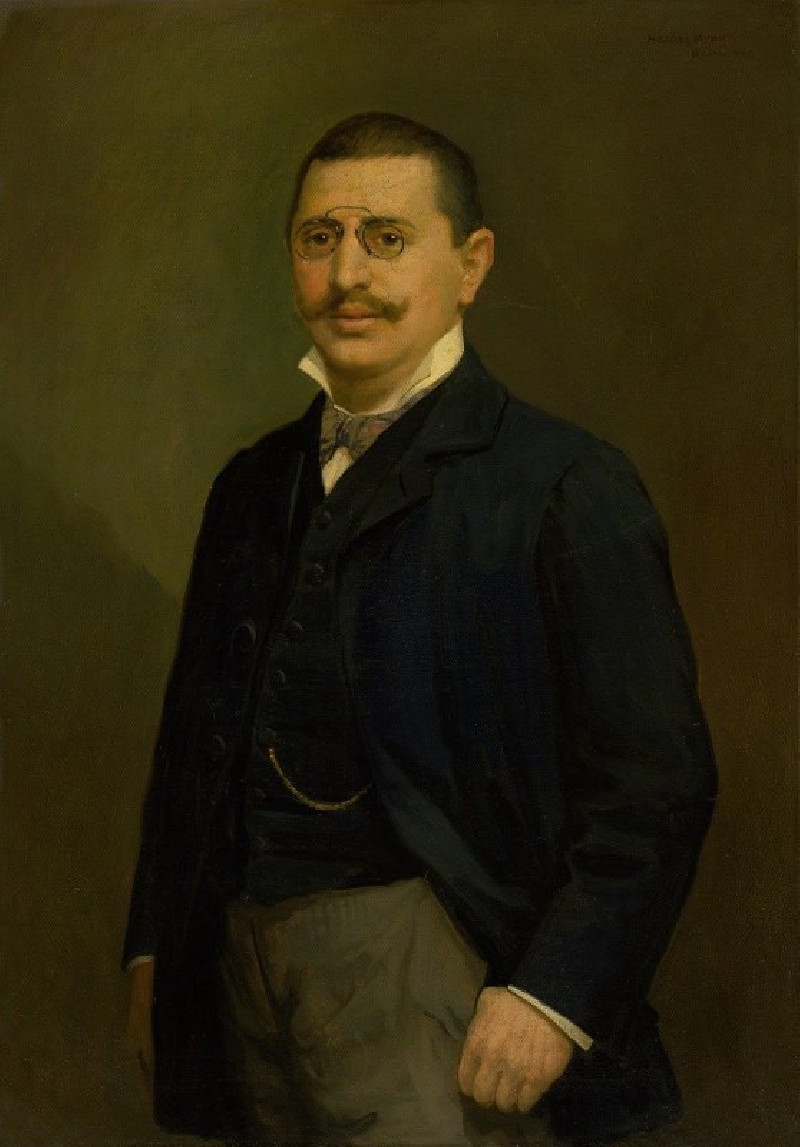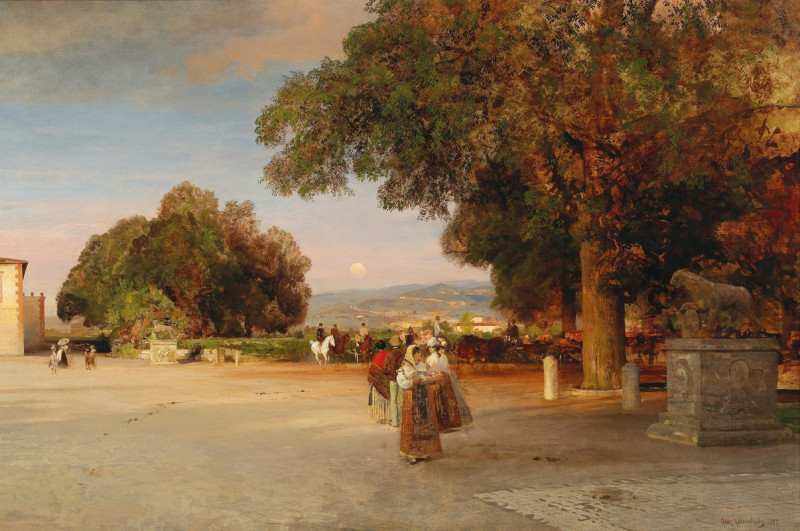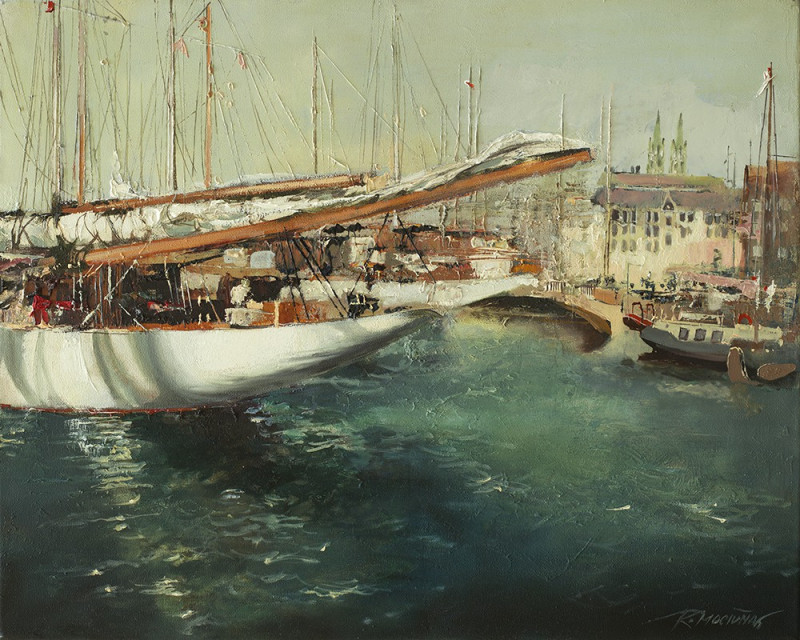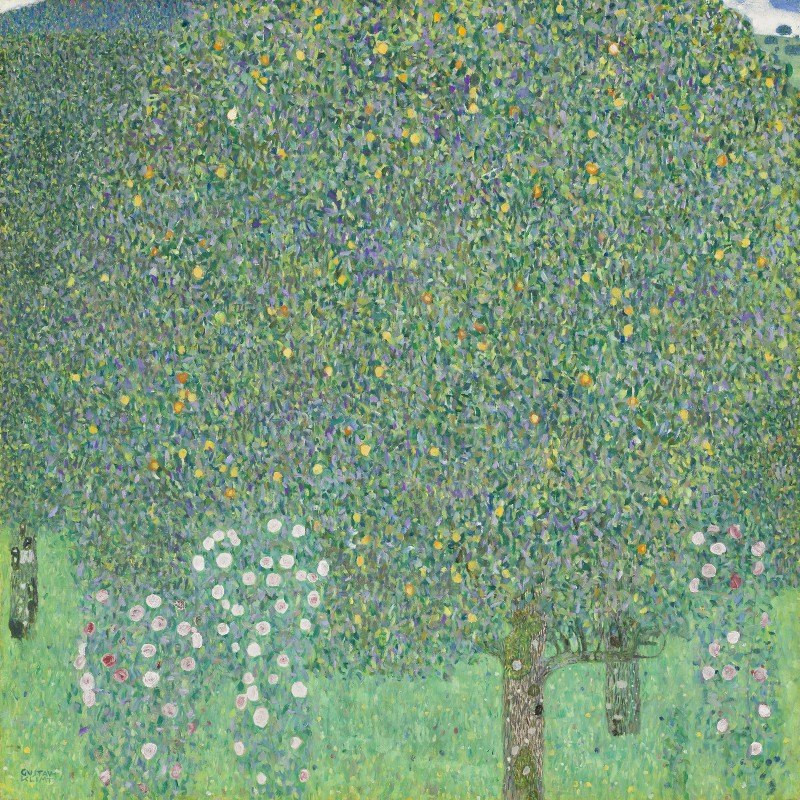Landscape near Pontoise, the Auvers Road (1881)
Technique: Giclée quality print
Recommended by our customers
More about this artwork
"Landscape near Pontoise, the Auvers Road," painted in 1881 by the esteemed artist Camille Pissarro, stands as a quintessential example of the Impressionist movement, embodying the values of natural scenery painted directly from life with an emphasis on the transient effects of light and color. In this serene composition, Pissarro captures a lush countryside expanse, brimming with vitality and calmness.The painting presents a panoramic view of gently rolling hills dotted with patches of fields and homesteads. The foreground features a broad dirt road curving off into the scene, drawing the viewer's eye along its meandering path. Several figures, possibly local peasants, are depicted engaging in casual conversation or going about their daily tasks, imbuing the scene with a sense of everyday rural life.With expressive brushwork and a rich palette, Pissarro plays with the texture and hue of the landscape. The soft greens and browns of the fields contrast with the vivid blue and white sweeps of the expansive sky, which dominates much of the canvas and highlights the open air theme central to Impressionist paintings.Pissarro's mastery is evident in his ability to fuse scenery and activity seamlessly, all the while preserving a fresh spontaneity that offers viewers a timeless glimpse into the rural French countryside near Pontoise.
Delivery
Returns
Blessed are they who see beautiful things in humble places where other people see nothing. — Camille Pissarro
Camille Pissarro (1830-1903) was born on St.Thomas (now the US Virgin Islands) to a Portuguese father and a Dominican mother. He went to Paris to study art at Ecole des Beaux-Arts. He was an early pioneer of pointillism and neo-impressionism and later became a mentor of many famous impressionist painters including Cezanne, Manet, Renoir, and Gauguin. His paintings depicted rural and urban French landscapes and lifestyle. Many of his works politically captured images of peasants and laborers. Today, he is considered the father of impressionism.

